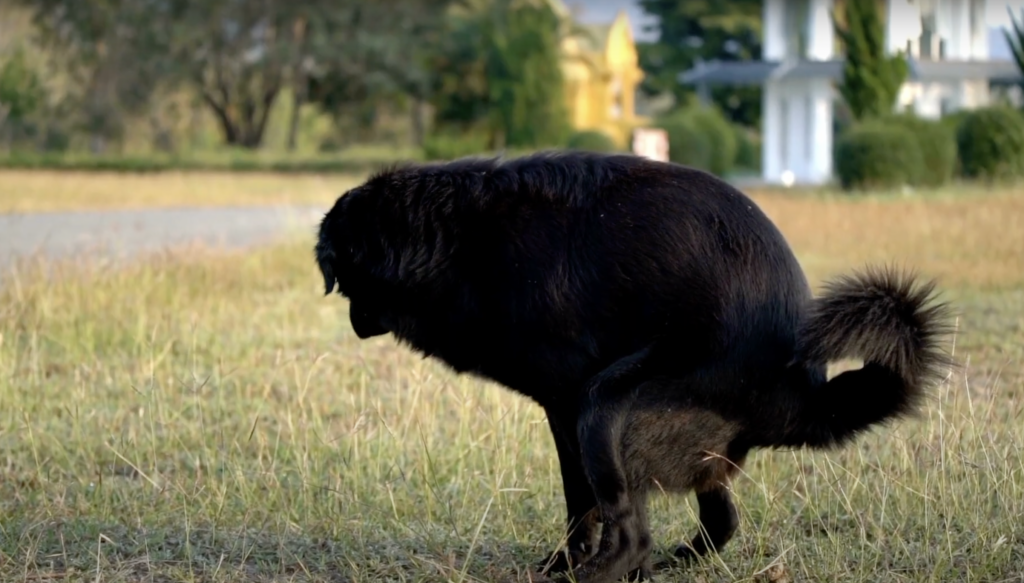Growing up in the 70s, 80s, or even the early 90s, people would have been familiar with the sight of white, chalk-like dog poop on the street or in parks, but this has practically disappeared since. Although the requirement to clean up after pet dogs might have helped with the disappearance of white poop, this isn’t the primary reason.
White dog poo is the result of too much calcium, mostly due to the high beef and bone meal content that dog food had in the past. This type of dog poo would quickly dry out and crumble in the sun, which often caused it to disintegrate when not picked up and binned. However, a change in the calcium requirements of dog food meant the white, chalky dog poop eventually became a thing of the past – mostly.
So, if you’re wondering what happened to white dog poop or your dog has just experienced this now elusive faeces, this article is here to help with everything you need to know.
Table of Contents
Why is Your Dog’s Poo White?
As previously mentioned, a diet high in calcium will change the colour of a dog’s stool to white. In the 1970s, dog food was rich in calcium-rich ingredients, like beef and bone meal. This was too much calcium for the dog to absorb, leading to an excess, which would then be found in the dog’s waste. This could sometimes cause constipation and other problems.

White dog poop is more likely to be linked to the raw diet now. As dogs who eat raw food will consume lots of bones – which are filled with calcium – as well as meat, fruit, and vegetables, they can end up eating lots of calcium. If this is your dog’s situation, you might want to adjust its diet slightly so it does not take on excess calcium.
What Happened to White Dog Poo in the UK?
The disappearance of white poo results from dogs’ diets improving over the decades. As knowledge of the nutritional needs of canines grew, commercial dog food adapted, too; one of the most prominent changes was that it reduced its high calcium content. This caused the colour and consistency of dog poop to change.
Is White Dog Poo Bad?
Although the occasional white poop is not bad for a dog, it can be a concern if this is a regular occurrence. Too much calcium over a long period of time could cause constipation, and a vet visit might be required.
Is White Dog Poop Still Found in the UK?
Even though it is rarer than it used to be, it is not unheard of for a dog’s poop to be white nowadays. Instead of being caused by too much calcium in store-bought pet food, it is now commonly connected to the raw food diet, which sees dogs eating bones.

When Should Your Dog’s Poo Be a Concern?
If your dog’s poo is white regularly, it might be an idea to check its diet or contact a vet for advice. However, this isn’t the only type of dog poo that can be worrying. Dog owners must pay attention to the colour and consistency of their dogs’ poop, as this can often be a sign of sickness or stress. For some, it will indicate that the dog ate something unfamiliar to their digestive system.
If you’re worried about your dog’s poop, the different colours and consistencies of dog poo listed below should provide some insight:
- A firm poo that ranges from light to dark brown is healthy and normal; it will vary depending on the dog’s food. The healthiest poop is usually like playdough.
- A black poop with a consistency similar to tar can indicate there is bleeding somewhere in the upper intestinal tract, including the mouth, small intestines, or stomach. As this can be a sign of internal bleeding, the dog should be taken to the vet immediately.
- Red streaks in a dog poop might indicate bleeding in the lower digestive tract. Although this will need to be checked by a vet if the issue persists, this is not as serious as black dog poop.
- Grey or yellow poop that appears greasy or covered in mucus could be a sign of food intolerance or too much fat in the dog’s diet; this is often seen when transitioning from one dog food to another. It could also mean the dog is experiencing gallbladder, liver, or pancreas issues, especially if the poo has an orange-yellow shade.
- A dog that eats a lot of grass might pass green poop.
- If there are white spots or strings in a dog’s poo, the dog might have intestinal worms. A vet will need to examine a sample of the dog’s stool for diagnosis.
Other symptoms, like lethargy or vomiting, might accompany a change in faeces with some health issues. If there is a change of colour and consistency in your dog’s stool, and if the dog is displaying other symptoms or its behaviour has changed, contact a vet immediately for advice.
To Sum Up
There you have it – that’s what happened to white dog poo in the UK.
Decades ago, it wasn’t uncommon for a dog’s poo to be white. White dog poop was caused by the too-high calcium content in dog food, which would cause excess and then be found in the dog’s stools. In the 1990s, white poo sightings dwindled; now, it can result from a raw diet.
Although white dog poop and the constipation it sometimes causes might not be concerning, a dog’s poo is an excellent indicator of its health. As this article has highlighted, the poo can be a sign of internal bleeding, food intolerance, or parasites. This is why it is essential to monitor your dog’s stools regularly.
Disclaimer: This article is for informational purposes only and should not be used as a substitute for professional veterinary advice.

